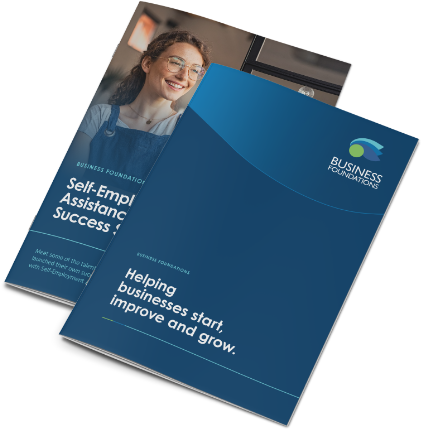How To Get Your Cash Flow Flowing Again
November 13, 2017
Money too tight to mention?
Maintaining a positive cashflow is a point of hardship for almost half of Australian small business owners (refer to Xero small business insights ). Only half of small businesses reported a positive cash flow for the month of June in 2017. It goes without saying that for your business to succeed long term, you need to have more money coming in, than money going out of your business.
There will always be months where you have more money going out than you have coming in, but if you’re prepared for this, it should not put an unmanageable strain on your business.
Here are some strategies to help you maintain a positive cashflow:
1. When you are predicting sales forecasts, you should always predict at least two different outcomes. Firstly, what you expect the sales figures to be and secondly, what you believe the worst-case scenario would be (factoring in external factors, delays, ‘quiet’ days etc). The idea here is for you check and see if your business can survive the ‘worst-case scenario’ forecasts. If the numbers reveal that you may have cashflow difficulties following the worst-case scenario analysis, you should organise a way to access more cash to cover the shortcomings (eg. Bank overdraft, delay supplier payments, etc). If the numbers reveal that you still have enough left over to cover all your outgoings, this is a great sign. But it’s still worthwhile having a contingency plan set up in case you need extra funds.
2. During the start-up period, many businesses engage in excessive spending in anticipation of profit. Remember that it takes time to build a reliable customer base and you should not expect the profits to start rolling in from day one. Look for things in your business that you can do yourself, such as logo design, marketing materials (using free online software such as Canva) etc. As a bonus, you will start to develop new skillsets, which can become a huge asset to your business and save you money down the track.
3. As much as we would like to imagine every invoice was paid on time, sometimes life just happens. It makes it much easier to plan your cash flow if you assume that you will always get paid at the time you have specified, but that’s not a realistic assumption. Setting up a firm plan around how to handle unpaid invoices can help reduce the stress for when it does occur. There are many elements to this plan which include: internal timelines for reminders, penalties for late payments, discounts for early payments and providing more avenues for payment.

Most of us have every intention to pay our invoices on time, but life often gets in the way and unless we’re reminded it can get lost in the thousands of thoughts that occupy our brain on any given day. Setting up a timeline for when to remind clients that they have an invoice due can give them that gentle push they sometimes need. It’s important that this reminder is structured in a friendly and polite manner, the last thing you want to do is offend your customers. A simple timeline for a 30-day invoice timeline would look like the following:
30 days until payment due: Invoice sent out to client
7 days until payment due: An email reminder to the client as a gentle reminder that they have an outstanding invoice due in 7 days (can be automated)
1 day before payment due: A phone call from someone in the business reminding the customer that they need to pay before tomorrow or they will incur additional fees for late payment.
This leads into the second element, if you do not have any repercussions for customers who pay their invoices past the due date, there is little incentive to get the payment in on time. This can be facilitated in a few different ways, discontinuation of service until the payment is met, or additional fees for late payments. Alternatively, you can frame this as exactly the opposite. Offer your clients ‘discounts’ for paying their invoices on-time or early. This is a friendlier way of approaching the same issue and might generate you some extra cred from your customers.
Another approach to ensuring that you get your invoices paid on time is to make payments as convenient as possible for your customer. One of the ways to do this is to offer a larger variety of payment methods – bank deposit, Paypal, credit or debit cards to name a few. However, be wary that some payment methods can attract an additional fee, so be sure to do your research.

In some circumstances, it’s not possible to get your customers to pay their invoices on time. Large corporations are often guilty of this, since they have the bargaining power of thousands of suppliers and a monopoly on the market they are able to dictate when they pay. In this instance you have two options, reduce the deadline on the payment terms to 7 or 14 days, in an attempt to get the payment within the 30-day window. Or secondly, budget for the 30-day invoices to be paid in 45 days and manage your cash flow to this rule rather than a 30-day payment term.
4. The fourth strategy is just as applicable to your personal cash flow and budget as it is to business. Keeping a ‘cushion’ of cash on hand in case of emergencies or unforeseen events. The last thing you want to do in an emergency is be scrambling to find the additional cash you need to ‘fight the fire’ so to speak. Having access to a stock of cash can save you from incurring the costs of having to acquire additional funds to cover cash flow shortfalls. It’s a good idea to understand what your fixed costs are (fixed costs are the expenses that do not change based upon how busy you are such as rent) and make sure that the cushion of savings you keep is enough to cover these costs at a minimum.
5. Lastly, utilise the technology that is available to simplify the cash flow process. Most of the cash flow issues can be thwarted if you are well prepared and technology can assist you with this planning process. There are numerous bookkeeping programs such as Xero, Quickbooks, and MYOB to name a few. These programs provide direction, a user-friendly interface and a mobile application, so you have all the information you need at your fingertips. This software can be powerful, but understandably, intimidating at the same time. Why not check out our upcoming small business workshops for the next short course on ‘How to understand your financials’ or ‘Intro to Xero’ to give yourself a head start.
If you follow these five strategies, you put yourself in the best position to ensure that you always have cash on hand and that your invoices are paid on time.
Click here to view our upcoming workshops.
Disclaimer: Any representation or statement expressly made or implied by Business Foundations or any of its consultants or employees is made in good faith on the basis that neither Business Foundations or the consultant/employee takes responsibility, or shall they be held liable in respect of any such representation or statement, whether by reason of negligence, lack of care or in any other manner whatsoever.
Acknowledgement Of Country
Business Foundations acknowledges the traditional custodians throughout Western Australia and their continuing connection to the land, waters and community. We pay our respects to all members of the Aboriginal communities and their cultures; and to Elders both past and present.
Victoria
The Commons
80 Market Street,
South Melbourne VIC 3205
admin@businessfoundations.com.au
Western Australia
Wesley Central
2 Cantonment Street,
Fremantle WA 6160
admin@businessfoundations.com.au


Get In Touch
Have a question or to find out how we can help you, please get in touch.






